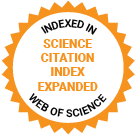Journal of Medical Internet Research
The leading peer-reviewed journal for digital medicine and health and health care in the internet age.
Editor-in-Chief:
Gunther Eysenbach, MD, MPH, FACMI, Founding Editor and Publisher; Adjunct Professor, School of Health Information Science, University of Victoria, Canada
Impact Factor 5.8 CiteScore 11.7
Recent Articles

The global population is aging rapidly, with projections indicating a doubling of older adults by 2050. Among the chronic conditions affecting this demographic, diabetes stands out due to its prevalence and impact on health. Mobile health (mHealth) app interventions show promise in improving health outcomes, leveraging the widespread adoption of smartphones among older adults.

Digital health interventions, especially mobile applications, have become instrumental in helping women at risk of polycystic ovary syndrome (PCOS), increasing their understanding of the condition, improving self-care, and fostering empowerment. However, their rapid proliferation has brought about significant challenges regarding quality assessment and evidence-based determination. Therefore, establishing reliable quality assessment methods is essential to assist PCOS patients in identifying effective and trustworthy mobile health tools.

The present study aimed to: 1) determine the prevalence and sociodemographic predictors of using sleep wearables in Canada, 2) evaluate the perceived effects of wearable use on sleep and stress, 3) compare sleep and healthcare-seeking behaviours in users and non-users, and 4) investigate the moderating effects of wearable use on the association between sleep and anxiety.

The importance of social connectedness as a determinant of health and well-being in older adults is well-established. Ecological momentary assessment (EMA) shows promise for real-time measurement of social interactions, making it worthwhile to investigate its feasibility and the challenges of applying it to older adults.

The COVID-19 pandemic accelerated global telehealth adoption, prompting the South Korean government to temporarily legalize telemedicine in 2020 and subsequently launch a pilot program in 2023. As South Korea transitions to a postpandemic digital health environment, understanding the factors associated with willingness to use (WTU) and willingness to pay (WTP) for telemedicine and teleconsultation is essential for informing effective policy and service design. However, few studies have explored how preferences vary across clinical domains or user groups.


Disease-agnostic platforms (DAPs) are a digital health intervention (DHI) category that can support patients across multiple clinical conditions. While their versatility and configurability can address the fragmentation caused by condition-specific DHIs, DAPs present challenges for evaluation and certification, as they must be assessed across multiple therapeutic areas and diverse applications. A core challenge is identifying suitable evaluation frameworks that can accommodate the highly adaptable nature of this technology.


In the context of escalating global mental health challenges, adolescent suicide has become a critical public health concern. In current clinical practices, considerable challenges are encountered in the early identification of suicide risk, as traditional assessment tools demonstrate limited predictive accuracy. Recent advancements in machine learning (ML) present promising solutions for risk prediction. However, comprehensive evaluations of their efficacy in adolescent populations remain insufficient.

The design and integration of technology within inpatient hospital rooms has a critical role in supporting nursing workflows, enhancing provider experience, and improving patient care. As health care technology evolves, there is a need to design “future-proofed” physical environments that integrate technology in ways that support workflows and maintain clinical performance. Assessing how current technologies affect nursing workflows can help inform the development of these future environments.
Preprints Open for Peer-Review
Open Peer Review Period:
-
Open Peer Review Period:
-
Open Peer Review Period:
-
Open Peer Review Period:
-
Open Peer Review Period:
-


















